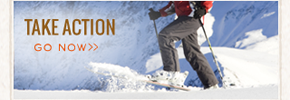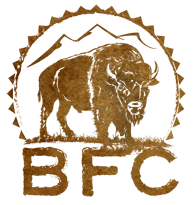Photo by Stephany Seay, Buffalo Field Campaign.
On Wednesday a bunch of us attended the Interagency Bison Management Plan meeting in West Yellowstone, Montana. The biggest news to come out of the meeting was the announcement by the Inter Tribal Buffalo Council (ITBC) – which includes fifty-eight tribes from nineteen states and a collective herd of over 15,000 buffalo – that they are no longer shipping buffalo to slaughter, because their mission is "restoring buffalo to the Indian Country, to preserve our historical, cultural, traditional and spiritual relationship for future generations." This is important because it takes away some of the ability of Yellowstone National Park to deflect blame onto tribes for the slaughter.
After getting in our two-minute chance to make public comments, that meeting was disrupted by four BFC women, who were promptly escorted out of the building by law enforcement. We did this act of solidarity because these meetings are the place where the fate of the buffalo is decided by people who do not consider the buffalos’ perspective, and they are always business as usual. These meetings have become much too comfortable for these agency people who do not realize the impact their paper reports and meeting discussions have. It’s always cold “numbers” talk, or trying to think they know what’s best for the buffalo. Cold and calculated talking in mindless circles with no consideration of what the buffalo think, feel, want, or need. The decision-makers drone on and on about how many different ways they can kill or manipulate the buffalo, and it was no different today. With respect to the tribal representatives, we chose our moment of disruption when a Yellowstone official was going over all the killing they did this year, just talking about the buffalo like they are nothing but numbers, how to reduce an already extremely vulnerable population, and glossing over the dire straits of the Central herd.
When I was escorted out of the room by a Forest Service law enforcement officer, he tried to talk to me about how that’s not the way to make a point. But, how is one to make a point with these people who never listen to the citizens who have repeatedly over the course of decades expressed their strong opposition to what they are doing. They always defer to the livestock industry and not to the larger majority who want this war against wild buffalo to end. I told him that nothing else works — we make our public comments, which Yellowstone Superintendent Dan Wenk didn’t even have the courtesy to show up in time for — and they repeatedly ignore us. They did not ignore us today. We spoke up for the buffalo, and we were heard.
Photo by Stephany Seay, Buffalo Field Campaign.
The next generation of wild buffalo is starting to arrive! On Tuesday morning, patrols spotted the first baby buffalo in the Hebgen Basin. It was a brief glimpse; the family group appeared along the highway, near the Madison River, and quickly trotted off across Highway 191, heading west down the Madison Arm Road into the national forest. No other calves were seen by patrols that day, though we are anxiously waiting, as are the pregnant buffalo who’s bellies are about to burst with new life.
Photo by Stephany Seay, Buffalo Field Campaign.
Many of the surviving members of the imperiled Central herd are making their way into the Hebgen Basin, heading to calving grounds and lands that have opened up now that the snow is nearly gone. Still, much of the grass is being found along the highways, which cut through their migration corridors, which means the buffalo are vulnerable to being harassed and hit by vehicles. Our patrols have been extremely busy every day, all day, into the late hours of the night, placing our “Buffalo on Road” signs up, warning traffic and saving lives. Buffalo don’t just come out to the road and cross it and move on; they will graze alongside the highways, bed down, and move on further alongside the highway, sometimes walking back and forth across the road, sometimes walking right down the middle of the road. A lot of people are fascinated by seeing the buffalo, and pull over to take photos or video, appreciating their presence; others are not so kind, and refuse to slow down, sometimes speeding up, honking their horns, and otherwise disrupting the buffalos’ migration. Being on the highways we see the whole spectrum of attitudes about buffalo, and while some of the human behavior is aggravating and dangerous, for the most part, the majority of people are thrilled about the buffalo.
WILD IS THE WAY ~ ROAM FREE!!!
~ Stephany










